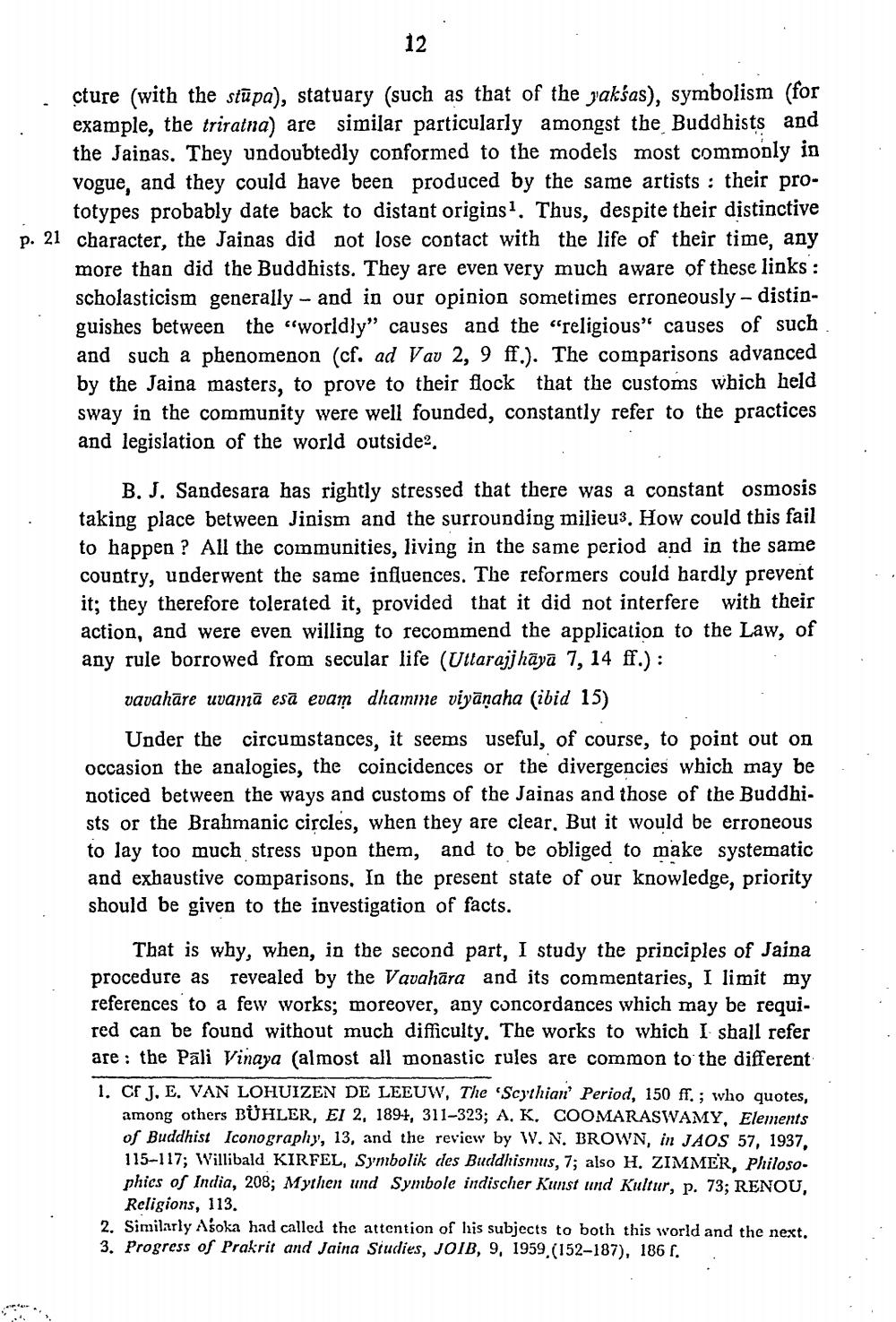________________
12
cture (with the stupa), statuary (such as that of the jaksas), symbolism (for example, the triratna) are similar particularly amongst the Buddhists and the Jainas. They undoubtedly conformed to the models most commonly in vogue, and they could have been produced by the same artists: their prototypes probably date back to distant origins1. Thus, despite their distinctive p. 21 character, the Jainas did not lose contact with the life of their time, any more than did the Buddhists. They are even very much aware of these links: scholasticism generally - and in our opinion sometimes erroneously - distinguishes between the "worldly" causes and the "religious" causes of such and such a phenomenon (cf. ad Vav 2, 9 ff.). The comparisons advanced by the Jaina masters, to prove to their flock that the customs which held sway in the community were well founded, constantly refer to the practices and legislation of the world outside2.
B. J. Sandesara has rightly stressed that there was a constant osmosis taking place between Jinism and the surrounding milieus. How could this fail to happen? All the communities, living in the same period and in the same country, underwent the same influences. The reformers could hardly prevent it; they therefore tolerated it, provided that it did not interfere with their action, and were even willing to recommend the application to the Law, of any rule borrowed from secular life (Uttarajjhaya 7, 14 ff.):
vavahāre uvama esa evam dhamme viyāṇaha (ibid 15)
Under the circumstances, it seems useful, of course, to point out on occasion the analogies, the coincidences or the divergencies which may be noticed between the ways and customs of the Jainas and those of the Buddhists or the Brahmanic circles, when they are clear. But it would be erroneous to lay too much stress upon them, and to be obliged to make systematic and exhaustive comparisons. In the present state of our knowledge, priority should be given to the investigation of facts.
That is why, when, in the second part, I study the principles of Jaina procedure as revealed by the Vavahara and its commentaries, I limit my references to a few works; moreover, any concordances which may be required can be found without much difficulty. The works to which I shall refer are: the Pali Vinaya (almost all monastic rules are common to the different 1. Cf J. E. VAN LOHUIZEN DE LEEUW, The 'Scythian' Period, 150 ff.; who quotes, among others BÜHLER, EI 2, 1894, 311-323; A. K. COOMARASWAMY, Elements of Buddhist Iconography, 13, and the review by W. N. BROWN, in JAOS 57, 1937, 115-117; Willibald KIRFEL, Symbolik des Buddhismus, 7; also H. ZIMMER, Philosophics of India, 208; Mythen und Symbole indischer Kunst und Kultur, p. 73; RENOU, Religions, 113.
2. Similarly Aśoka had called the attention of his subjects to both this world and the next. 3. Progress of Prakrit and Jaina Studies, JOIB, 9, 1959, (152-187), 186 f.




